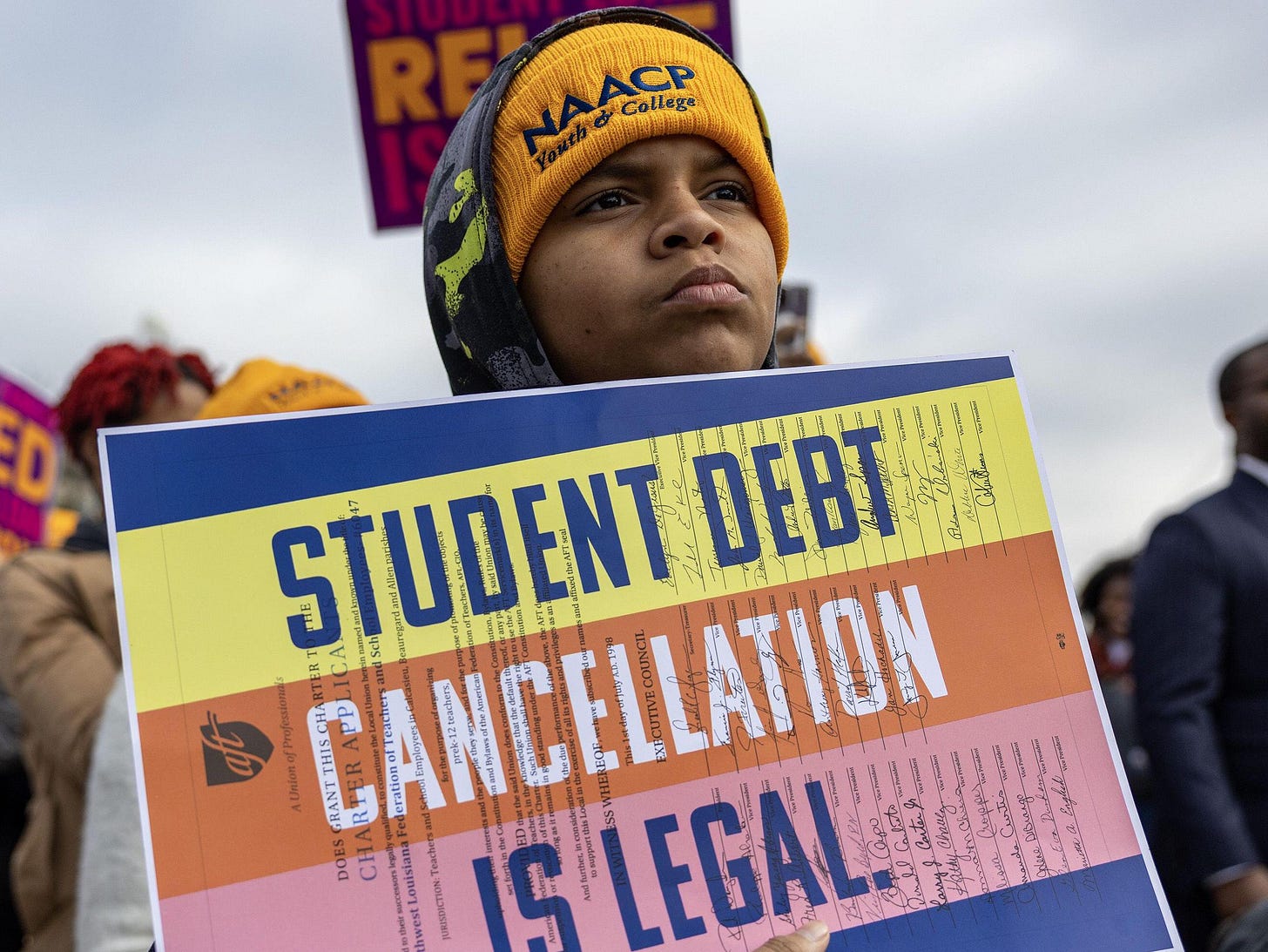The Unforgiven: How the U.S Supreme Court Will Make Graduates Pay
Matt Bernardini on how the U.S Supreme Court is set to derail President Joe Biden's student loan forgiveness program
After seeing venture capitalists and other depositors of two fairly large banks receive a bailout, American students now appear to be headed back into more debt, as it appears that the Supreme Court will rule that President Joe Biden’s student loan forgiveness program is unconstitutional.
Last week Silicon Valley Bank, home to more than 2,500 venture capital firms, collapsed amid huge losses and a bank run. Two days later, New York regulators closed down Signature Bank, whose clients included the Trump Organization. Most of the customers of these banks had more than $250,000 in their accounts, which is the maximum amount insured by the government.
Nonetheless the Biden administration has said that it will repay all deposits. There are good reasons for ensuring that many of these companies don’t go under, but the speed at which the Biden administration moved to save companies was lightning quick compared to what it has done on student loans, which arguably have a much bigger impact on the economy and more importantly, people’s lives.
Student debt is not a uniquely American phenomenon, but the size of the problem is. Total student loan debt in the U.S. has reached a staggering $1.7 trillion, as rising tuition costs and interest rates have overwhelmed 45 million people. The average cost of tuition in the US has more than tripled over the last 50 years, as state support for universities has fallen. Throw in an average federal interest rate of 6.36% and you get a student loan bubble the size of Australia’s economy.
That debt burden is not shared equally. As the Economic Policy Institute points out, student loan debt disproportionately affects women and minorities.
Women hold nearly two-thirds of the $1.7 trillion in student debt, while Black college students owe an overall average of $25,000 more in student loan debt than white college graduates.
This mountain of debt also has broader implications for the economy. A 2021 poll by the National Association of Realtors found that 60% of millennials said student loans were holding back their ability to buy a house, as many are forced to prioritize debt payments. Debt payments are made on a monthly basis to either the government or a private lender. Repayment plans range from ten to thirty years, and it’s been estimated that the average monthly student loan payment is more than $300.
Furthermore a report from the Education Data Initiative found that since 2005, homeownership among recent college graduates has declined by 1.8% for every $1,000 of their student loan debt. In that same report, 72% of student debt holders who do not own homes, said that their debt would delay homeownership.
All of this led to a flurry of activism by many progressive organizations, urging Biden to use his authority to cancel student debt. After much reluctance, the President announced his student debt relief plan in August 2022. It would cancel $10,000 of debt and $20,000 for the recipients of Pell Grants, which are a form of federal government subsidy awarded to students from low-income families.
Importantly, the plan would also cap income repayments at 5% of a borrower’s discretionary income and essentially eliminate interest, by having the government cover the cost. While not perfect, the plan would have vastly improved the lives of tens of millions of Americans, which is why it doesn’t stand much of a chance at the Supreme Court.
Many experts who followed the oral arguments made before the Supreme Court last month said that the court’s Conservative justices seemed ready to sink the plan.
Chief Justice John Roberts criticized the program, saying he felt that most Americans would not want the executive branch handling an issue this large.
“I think most casual observers would say if you’re going to give up that much money, if you’re going to affect the obligations of that many Americans on a subject of great controversy, they would think that’s something for Congress to act on.” Roberts said.
Unfortunately for the Chief Justice, polling has consistently shown that a majority of Americans support Biden’s proposal to forgive some student debt. But considering abortion also had majority support, the court likely won’t be too concerned with angering the public.
According to legal experts, the best chance for the program to survive is for the challenges to be dismissed for a lack of standing. Meaning the plaintiffs do not have a legal right to sue because they have not suffered any harm. Any reasonable person would be able to conclude that is the case here.
There are two challenges currently before the Supreme Court. One of them is a coalition of states contending that the Biden administration does not have the power to implement the debt-relief program.
According to SCOTUSblog, the states’ main argument “is that Missouri has standing because it created and controls the Missouri Higher Education Loan Authority, one of the largest holders and servicers of student loans in the United States.” They contend that this program could cost MOHELA money, god forbid. But MOHELA is not a plaintiff in this case.
The second challenge before the court consists of two plaintiffs who are actually upset that they have not gotten more debt relief. Specifically they contend that they have standing because they were not given a notice and comment period to express their displeasure.
Justice Elena Kagan has called that argument “totally illogical” because it would only take away benefits from others.
Totally illogical is correct. Yet this Supreme Court has demonstrated its willingness to not let logic get in the way of screwing over average Americans. If they overturn this program, they’ll not only be hurting millions of borrowers, they’ll be hurting the economy and the Republican nominee’s chances in 2024.


